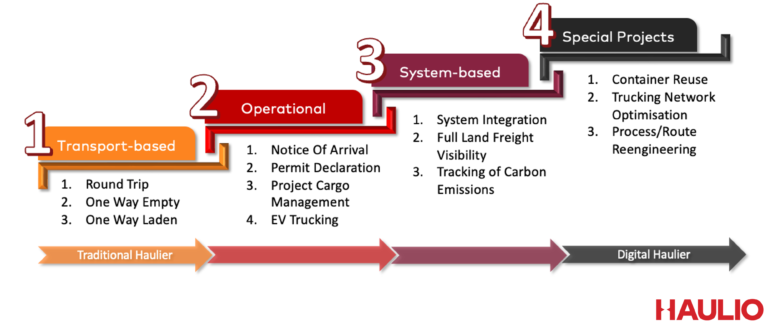Greening the Road: The Rise of Electric Heavy Goods Vehicle in Trucking
The transportation sector is undergoing a significant transformation with the rise of electric vehicles (EVs). Particularly in the supply chain industry, the adoption of Electric Heavy Goods Vehicle (e-HGVs) is gaining momentum.
The Growing Trend of Electric Vehicles
Key factors driving the rise of EV include:
1. Technological Advancements
With advances in battery charging technology, EVs can drive longer distances, making them suitable for extended trips that were once only possible with diesel vehicles.
For charging of EVs batteries, there are 2 options available for drivers:
- Charging of battery at charging point
- Battery charging and swapping/Battery as a Service (BaaS)
BaaS is rare as it requires specialised support and a network of swapping stations. Yet, the challenge has sparked renewed interest in China for battery swapping stations. As of 2023, there’s a total of 3,567 battery swapping stations in China. This helps to reduce drivers’ waiting time at and for a charging point, allowing to get back on the road faster.
In Singapore, there are various battery swapping trials for motorcycles ongoing. But, for e-HGVs the trial is starting. Land Transport Authority (LTA) has awarded a Sandbox to trial e-HGV battery charging and swapping (BCSS) system to PSA Corporation Ltd and a consortium comprising Strides Frontier Pte Ltd and Ecoswift Pte Ltd to provide services for e-HGVs. The trial will start in second half of 2024 and expected to last four years.
These technological advancements makes electric trucks a more viable option for long-distance hauling. helping to reduce emissions and improve sustainability in the trucking industry.
2. Net Zero Commitment
As part of the Paris Agreement, governments worldwide are implementing stricter emissions regulations to achieve the following:
- Reduce emissions by 45% by 2030
- Net zero by 2050
In Singapore, the local government has implemented Singapore Green Plan 2030. The plan also details targets for cleaner-energy vehicles:
2025 targets:
- New registrations of diesel cars and taxis to cease from 2025
- All HDB towns to be Electric Vehicle (EV) ready with chargers at all HDB carparks by 2025
2030 targets:
- All new car and taxi registrations to be of cleaner-energy models from 2030
- Deploy 60,000 EV charging points nationwide by 2030
2040 targets:
- All vehicles to run on cleaner energy by 2040
To achieve these targets, the local government is incentivising the adoption of EVs through various schemes.
With such incentives and regulations in place, businesses are more motivated to reduce their carbon footprint and invest in greener solutions.
3. Environmental Benefits
EVs and e-HGVs produce lesser tailpipe emissions, significantly cutting down on harmful greenhouse gases. With the elimination of diesel exhaust, it reduces the presence of harmful pollutants such as nitrogen oxides and particulate matter, contributing to better air quality. Additionally, the engines operate at a lower decibel compared to traditional diesel vehicles, reducing noise pollution in urban areas and along delivery routes.
Haulio's Commitment to Sustainability
Our commitment to greening the road is demonstrated through several initiatives:
1. Electrification of fleet through Partnership
Electrification of the haulage industry will be a major step for the industry towards the Net Zero Commitment. To achieve this, Haulio collaborates with various stakeholders to promote the adoption of EV in logistics.
With Haulio, companies can electrify their fleets in a way that is both commercially and operationally sustainable. For hauliers, Haulio can help make the transition from diesel to e-HGVs. While for shippers, we will be offering EV trucking options to support your sustainability goals.
Read about what our driver has to say about driving an e-HGV here.
2. Innovative Solutions
Besides embarking on fleet electrification, Haulio’s suite of smart solutions helps to enhance the efficiency of trucking services. Allowing users to embark on a transformative journey in haulage, transitioning from handwritten to cloud-based and mobile applications.

Conclusion
The rise of e-HGVs is a promising development for the logistics industry, offering a path towards a more sustainable future. As a digital haulier, Haulio aims to lead the change for a more sustainable future, demonstrating to our stakeholders that it is possible to achieve both economic and environmental goals.
With smart solutions and cloud-based technologies, the future of trucking looks greener than ever.
References:
- https://restofworld.org/2024/ev-battery-swapping-china/
- https://www.lta.gov.sg/content/ltagov/en/industry_innovations/land-transport-innovation-portal/land-transport-sandboxes.html
- https://www.businesstimes.com.sg/companies-markets/transport-logistics/singapore-trial-battery-swapping-and-mobile-charging-electric-heavy-goods-vehicles
- https://www.un.org/en/climatechange/net-zero-coalition
- https://www.mot.gov.sg/what-we-do/green-transport/electric-vehicles
- https://www.techinasia.com/future-evs-singapore-swappable


